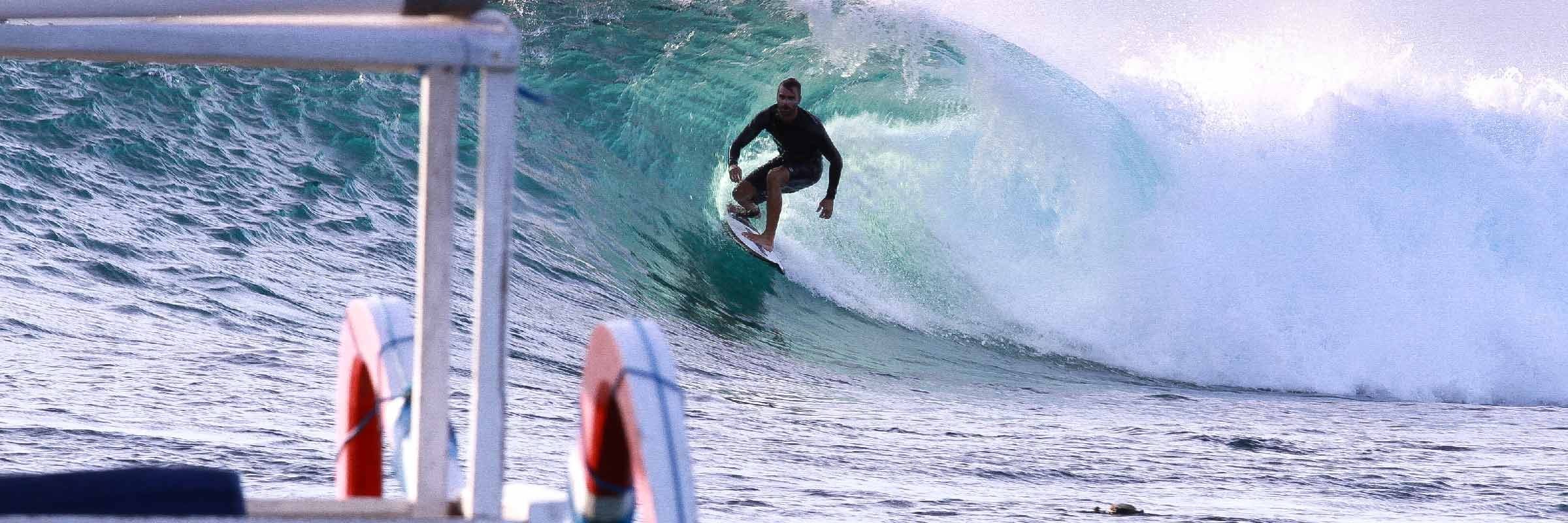

#1 - copy

Online surf coaching for beginners & intermediates
#1 - copy

Online surf coaching for beginners & intermediates
The shape of the end part of your surfboard, the tail, has a key role to play in the response of your surfboard. It’s the last place where the water flows under your board, and where the fins are placed. Like the basics of surfboard volume and dimensions, a wide bulky tail provides stability, floatation and speed. Smaller tails will sink more in the water, giving you more “bite”, more control in bigger waves, and making it easier to shift from rail to rail.
Another key characteristic of tails are their angles. More pronounced angles, for example the end corners on a “square tail”, allows water to easily get released out the back. This translates into a “skatier” or “looser” feel, which is great to shift direction quickly and do many different manoeuvers on the shoulder. Round curves, found on pin tails and round tails, hold water flow under the surfboard for longer. This provides you with extra hold and control, which is optimal for barrels and bigger waves.
Although there are endless varieties of tails, they can be grouped into a few categories from which they blend together.

Pin tails are mostly found on guns or “step-ups”, surfboards that are specifically designed for big waves. This type of tail gives you the ultimate hold and control. Its very narrow shape means the tail sinks deeper in the water, giving you extra “traction”, a bit like a big fin would. This tail is optimal in big waves and tubes, when surfers need hold and control much more than they need maneuverability and the ability to pivot quickly.
Ideal Conditions: Huge waves.



The round tail is a compromise between a big wave tail (pin tail) and a performance tail like the squash tail. The extra volume compared to the pin tail will create more lift, translating into a surfboard that is faster and easier to turn. With its round, continuous curves, the water still wraps around this tail without getting released out the back too quickly, giving you plenty of hold. The round tail is great for big drawn out carves, control in hollow surf and for keeping your speed even in weaker parts of the wave (far from the pocket).
Ideal Conditions: Can help surf bigger waves with confidence without sacrificing too much maneuverability.
 Squash Tail
Squash TailOne of the most versatile tail shapes, the squash tail is also the most common one. Its square shape creates quick release, while its rounded corners provide hold, similar to the round tail. Squash tails are very commonly used by professional surfers because they are optimal for quick, sharp turns. Bigger and wider squash tails will provide a looser, faster surfboard. Small, narrow squash tails will give surfers extra hold and control, as the tail will sink more and act similarly to a pin tail, with more manoeuvrability.
Ideal Conditions: Very versatile, at its best when surf conditions are great. Can work well in both medium-big surf and weaker waves.

The swallow tail is commonly found on small wave boards like the fish. It is wider than most tail shapes, allowing for plenty of planing speed. Unlike a wide squash tail though, this tail can still hold when doing turns on steep waves, because the swallow tail acts like two connected pin tails. This tail shape provides plenty of speed without sacrificing traction on the wave.
Ideal Conditions: Great for small waves but can also hold in steep waves.
 Strengths:
Strengths: Gives extra control, a bit like having 2 “pin tails” for traction, with more speed as it is much wider than the classic pin tail. The tail shape helps to counterbalance the difficult of maneuverability of a big, wide fish.
 Weaknesses:
Weaknesses: Less speed than a wide squash tail. Lack of looseness makes it harder to transition from rail to rail.


Experimenting surfboards with different tail shapes and various fin set-ups can be great for your surfing progression. Understanding and feeling how your equipment responds to your surfing is key when working on surfing with more flow, style and ability.
7-day surf coaching retreats
7-day surf coaching retreats
10-day surf coaching retreats
10-day surf coaching, intermediates only
10-day surf coaching, intermediates only
Surf better, faster
Get news about our latest Tutorials
& Surf Coaching Retreats
Leave a comment